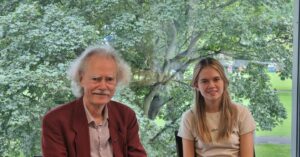I am writing this blog post on the final day of my internship. The 12 weeks have flown by! Over this period, a lot of progress has been made to the new version of the site.
This has consisted of:
• Quality checking the data by comparing the data from the Survey of Scottish Witchcraft to the data on Wikidata.
• Making improvements and getting rid of bugs on the website .
• User testing sessions.
You can read more about these in the previous blog posts. However, there is still progress to be made so I am going to continue to work on this project one day a week when I return to university in September! This will allow us to make sure we are fully confident with the data being used and the happy with the content of the website before releasing the new version of the website. The new version of the website includes lots of exciting new information and features such as accusations of shapeshifting and ritual objects plotted on a filterable map, custom timeline searches, a Histropedia timeline where you can do name searches and filtering by age of accused and a new historic map layer using the 1750 Dorret georeferenced map from National Library of Scotland.
If you want to find out more about what I’ve been working on watch this video below:
Over the past 2 weeks I’ve had the opportunity to attend interesting witch related events at the Edinburgh festivals. I went to a talk at Edinburgh International Book Festival with the authors Mairi Kidd (We Are All Witches ) and Allyson Shaw (Ashes and Stone) who have written books about the accused witches of Scotland which they discussed in this talk. “We Are All Witches” tells fictionalised accounts of 16 of the accused witches based on the information available and “Ashes and Stones” follows the authors journey visiting memorials of the accused witches around Scotland. This highlighted the importance and relevance of telling the individual stories and the memorialisation of those who suffered.
With my manager I also went to see a play at the fringe called Prick, which told the stories of some of the executed women accused of witchcraft including Issobell Gowdie. These were both really inspiring, emotional and evocative events. I think after spending so long working with the data you begin to forget that these were real people and not just entries on a database, I was really reminded of how horrific, unjust and inhumane the trials and sufferings these women went through really were, which enforced in my mind the importance of sharing their stories. Also, both the authors at the book talk and the playwright of Prick used the Survey of Scottish Witchcraft as one of their primary resources when researching the Scottish witch trials which was a reminder of how valuable the data we are working with is.

Mairi Kidd & Allyson Shaw: Who Are the Real Witches? – Book Festival Talk
After going to both events it was really in our minds how important it is to remember and learn from these people’s stories and the there is a lot of interest in how they are memorialised. This has lead us to decide we will begin working on the idea we had to create a map of memorials for the accused witches. So people can see in one place the memorials that local areas have dedicated to the accused witches that were subject to the trials, torture and executions. We have started researching this by borrowing the book Witch Memorials of Scotland by Gregor Stewart from the University library. We also met with Professor Julian Goodare to update him on the progress that has been made, ask him for advice, make use of his expertise and discuss our future ideas going forward such as the map of memorials.

Ruby and Professor Julian Goodare
Overall, this internship has been a great experience because not only have I learnt lots of new technical skills (programming in R, Vue JavaScript framework, Wikidata, Sparql queries, user testing and user interface design) and professional skills (communication, teamwork and time management) I have also got to learn lots about this dark period of Scottish history through lots of different mediums. I’ve been inspired to learn more in my own time and have read Hex by Jenni Fagan which tells an imagining of Geillis Duncan‘s last night. This has made me passionate about working on this project as I’ve realised the real world value and impact of helping people to understand the stories and individuals behind this data. I’m looking forward to continuing this work and launching the new version of the site which hopefully further shares these individual stories as best we can.
(C.C BY 3.0)
(CC By 3.0)
(C.C BY 3.0)



Leave a Reply